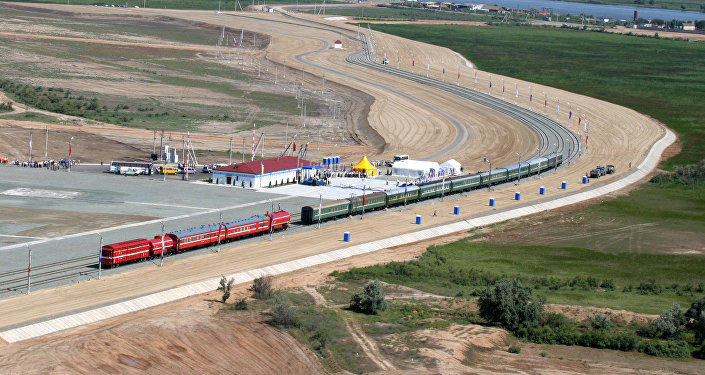North-South project to shape geopolitical alignment of participating states

By Kamila Aliyeva
The International North-South Transport Corridor (INSTC), which is set to connect Northern Europe with Southeast Asia, could have potential economic and geopolitical significance in the future, Eugene Chausovsky, Senior Analyst at Stratfor, told Azernews.
“Once it is fully operationalized, the INSTC project can
significantly reduce the transit times and costs of goods that are
being traded between the relevant countries. It can also serve as a
conduit to strengthen overall ties between the member-states,
particularly Russia and Iran, while potentially reducing their
economic ties and exposure to the West,” he said.
The importance of the project is yet to be determined and will
immensely depend on the extent to which it is effective in terms of
increasing trade turnover between the participating countries,
Chausovsky noted.
Currently, it takes more than 40 days for goods to travel from
India to Russia. However, after the launch of INSTC, transportation
would be completed in less than 25 days, thereby cutting down
timeframe by 30-40 percent.
“The trade turnover between the primary countries of the North-South corridor - Russia, Azerbaijan, Iran, and India - is relatively small compared to other trade corridor projects, such as China's One Belt One Road (OBOR) project,” he explained.
The expert considers that even smaller projects, such as the recently inaugurated Baku-Tbilisi-Kars railway, are ahead of the INSTC in terms of their operationalization.
“If it does succeed in increasing trade and economic linkages between the parties involved, it can have a significant impact in shaping the geopolitical alignment and trajectories of the participating states,” he added.
The International North-South Transport Corridor, a 7,200 kilometer-long freight route connecting India, Iran, Azerbaijan and Russia via ship, rail and road, is meant to connect Northern Europe with Southeast Asia. The main objective of the INSTC is to provide an alternative to the traditional routes carried out by sea through the Suez Canal and the Mediterranean and the Baltic Sea.
At the initial stage, it is planned to transport 5 million tons of cargo per year through the corridor and more than 10 million tons of cargo in the future.
The corridor is expected to bring huge benefits to the Azerbaijani budget. The route enjoys several advantages compared to other transport corridors, as it is considered to be more profitable for each parameter than other alternative routes, including reduction of the distance and delivery time two or threefold.
The corridor project has made a big step recently. In February 2016, Iran began construction of the Qazvin-Rasht and Astara (Iran) - Astara (Azerbaijan) railroad sections.
The Astara-Astara railway, as well as a station and cargo terminals in Iranian Astara were expected to be put into operation on December 25, but then this was postponed to January 2018. Azerbaijan will use railway facilities in Iranian Astara for at least 15 years.
For the Rasht-Astara railway - the longest section on the line between Iranian cities - Azerbaijan has allocated a $500 million loan for Iran to finance its construction. Construction will begin in the first half 2018. The opening of the 164-kilometer section is planned for 2020, making it possible to travel from Baku to Nakhchivan by train.
In December 2017, the Asian Development Bank (ADB) approved the granting of a loan for implementation of the North-South Transport Corridor Project. ADB itself will issue $400 million, and the French Development Agency (FDA) will provide another $175 million in co-financing.
The route is expected to be fully put into operation in two-three years. Meanwhile, cargo transportation along the North-South corridor for three quarters of 2017 exceeded 4.7 million tons, which is 21.6 percent higher than in the same period of 2016.
---
Kamila Aliyeva is AzerNews’ staff journalist, follow her on Twitter: @Kami_Aliyeva
Follow us on Twitter @AzerNewsAz
Here we are to serve you with news right now. It does not cost much, but worth your attention.
Choose to support open, independent, quality journalism and subscribe on a monthly basis.
By subscribing to our online newspaper, you can have full digital access to all news, analysis, and much more.
You can also follow AzerNEWS on Twitter @AzerNewsAz or Facebook @AzerNewsNewspaper
Thank you!
